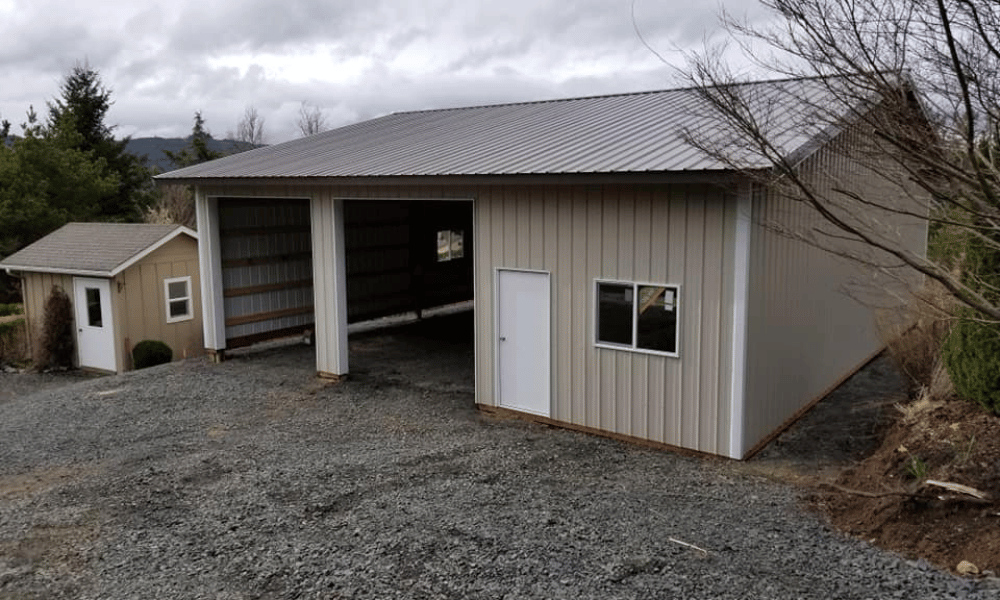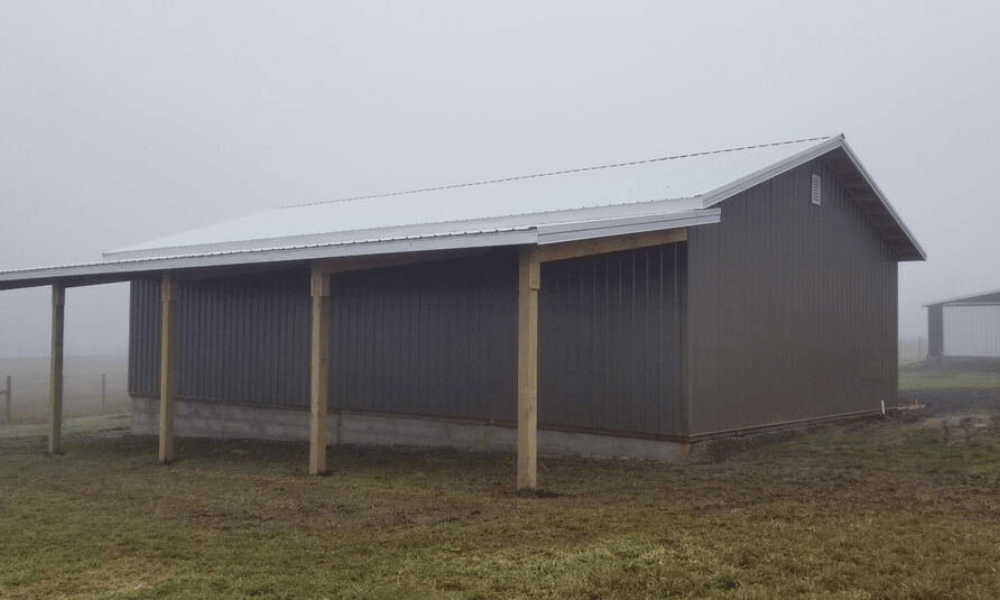Introduction
Have you ever felt the urge to create, to immerse yourself in artistic expression but found your workspace uninspiring? What if I told you that pole barns could transform into remarkable art studios, fueling your creativity and sparking inspiration? That's right! Pole barns, often associated with agricultural or storage purposes, are now gaining popularity as unique art studios. This article explores how these structures can be converted into inspiring creative spaces.
In a world where creativity knows no bounds, what makes pole barns such an excellent choice for artists? With their spacious layouts, rustic charm, and customizable features, pole barns provide the perfect canvas for artistic endeavors. Whether you're a painter, sculptor, or mixed media artist, the possibilities are endless when using these versatile structures. Let’s dive into the fascinating world of pole barns as art studios and uncover what makes them truly special.
Pole Barns: A Brief Overview
What are Pole Barns?
Pole barns are simple structures built using poles or posts as their primary framing support. Unlike traditional buildings that rely on extensive foundation work and heavy materials, pole barns use lightweight materials that make them easy to construct and modify. They typically feature a large open interior space free from internal load-bearing walls.
History of Pole Barns
Historically used for agricultural purposes like livestock housing and equipment storage, pole barns have evolved over time. Their sturdy design has made them a popular choice for various applications beyond farming. Artists are now discovering the charm and utility of these buildings as creative spaces.
Why Choose a Pole Barn for an Art Studio?
Spacious Layout: The expansive interior allows artists to work freely without feeling confined. Natural Light: Many artists prefer natural lighting; with proper window placement, pole barns can flood your workspace with sunlight. Cost-Effective: Compared to traditional studio spaces, constructing or converting a pole barn is usually more budget-friendly. Customizable: You can tailor your pole barn to fit your specific artistic needs—be it wall space for hanging artwork or flooring suitable for messy projects. Rustic Aesthetic: The natural wood elements provide an inspiring backdrop that resonates with many artists’ visions.Design Considerations for Your Art Studio
Location Matters
Choosing the right location for your pole barn is crucial. Consider factors like accessibility, noise level, and proximity to nature which can significantly influence your creative process.
Flooring Options for Creativity
When designing your studio within a pole barn, selecting appropriate flooring is essential:
- Concrete: Durable and easy to clean; ideal for messy mediums. Wood: Offers warmth but may require protection from spills. Epoxy Coatings: Provide both durability and aesthetic appeal.
Walls That Inspire
The walls of your art studio should reflect your personality:
Painted Walls: Bright colors can stimulate creativity! Gallery Walls: Dedicate space to display ongoing projects or past works. Corkboard Panels: Great for pinning inspirations or sketches.Lighting Your Space
Natural light is vital in any art studio but consider additional lighting options:
Track Lighting: Adjustable angles allow flexibility based on your current project. Floor Lamps: Perfect for cozy evenings spent in creative contemplation. Task Lighting: Essential for detailed work requiring focused brightness.
Ventilation Considerations
Artists often use materials that emit fumes or dust; therefore, good ventilation is key:
- Install windows that can open easily. Use exhaust fans to circulate air effectively.
Pole Barns as Art Studios: Inspiring Creative Spaces
Transforming a pole barn into an art studio requires imagination and planning—but once it’s done, you'll find yourself in an inspiring environment tailored just for you! Imagine walking into a bright room filled with all your tools neatly arranged around you while sunlight pours through large windows illuminating every corner of your creative haven.
To make this vision come true:


Creating Functional Work Zones in Your Studio
1. Artistic Workflow
Establish zones based on workflow efficiency:
- Preparation Area: For setting up materials before starting any project. Work Area: Where actual creation takes place; ensure it's spacious! Cleanup Zone: Keep cleaning supplies handy close after finishing projects.
2. Multi-functional Spaces
Consider incorporating multi-purpose furnishings:
- A large table can double up as both workspace and display area during exhibitions! Use portable carts so tools are always within reach wherever you are working inside the barn.
Incorporating Nature into Your Studio Design
1. Indoor Plants
Bringing greenery indoors not only enhances aesthetics but also promotes well-being and creativity! Here are some plants that thrive indoors:
| Plant Name | Benefits | |------------------|-------------------------------| | Spider Plant | Air purification | | Peace Lily | Low light adaptability | | Pothos | Easy care & trailing vines |
2. Outdoor Inspiration
Having outdoor access from your studio offers even more opportunities:
- Set up outdoor easels or benches where you can paint amongst nature’s beauty. Create a small garden area dedicated to cultivating flowers that inspire color palettes!
Artistic Community Building in Pole Barn Studios
Creating an artistic community around your pole barn studio opens doors to collaboration and shared inspiration!
1. Hosting Workshops
Consider hosting workshops where fellow creatives gather—this fosters learning while enhancing camaraderie among local artists.
2. Gallery Shows
Transform part of your studio into an exhibition space showcasing works from yourself—and invite others too!
FAQs About Using Pole Barns as Art Studios
1. How much does it cost to convert a pole barn into an art studio?
The cost varies depending on size and customization but generally ranges between $10-$30 per square foot based on local rates!
2. Do I need permits to build a pole barn?
Yes! Always check local zoning laws before construction; permits may be required depending on size/location.

3. Can I heat my pole barn during winter months?
Absolutely! Insulation options include spray foam insulation or reflective barriers paired with heating systems suited for larger spaces (like propane heaters).
4. What utilities should I include in my design?
Essential utilities include electric outlets (for tools), running water (cleaning), plus adequate lighting fixtures—think creatively about layout!
5. Are there any downsides to using a pole barn as an art studio?
While they offer many advantages such as affordability & flexibility; consider potential weather exposure affecting temperature control unless properly insulated/heated/cooling systems installed!
6.Is insurance necessary if I’m using my pole barn commercially?
Yes—it’s wise! Insurance protects against liability claims arising out of business-related activities conducted within this structure—always consult professionals regarding coverage options https://telegra.ph/The-Versatility-of-Pole-Barns-10-Benefits-You-Didnt-Know-About-02-17 available locally!
Conclusion
In conclusion, transforming a humble pole barn into an inspiring art studio is not just feasible—it’s exceptionally rewarding! By tapping into its potential through careful planning regarding layout choices plus functional features tailored specifically towards artistic pursuits—you’ll create an environment bursting at its seams with creativity waiting eagerly beckoning each brushstroke crafted upon canvas created therein!
So why wait? Dive headfirst into this exciting journey today—turn those dreams of creating masterpieces amidst rustic charm into reality by embracing what makes these unique structures so special! Let’s roll up our sleeves together; let’s get started on making magic happen inside our very own personalized paradise dedicated solely towards unleashing boundless artistic energy housed safely under sturdy roofs provided by none other than…pole barns!